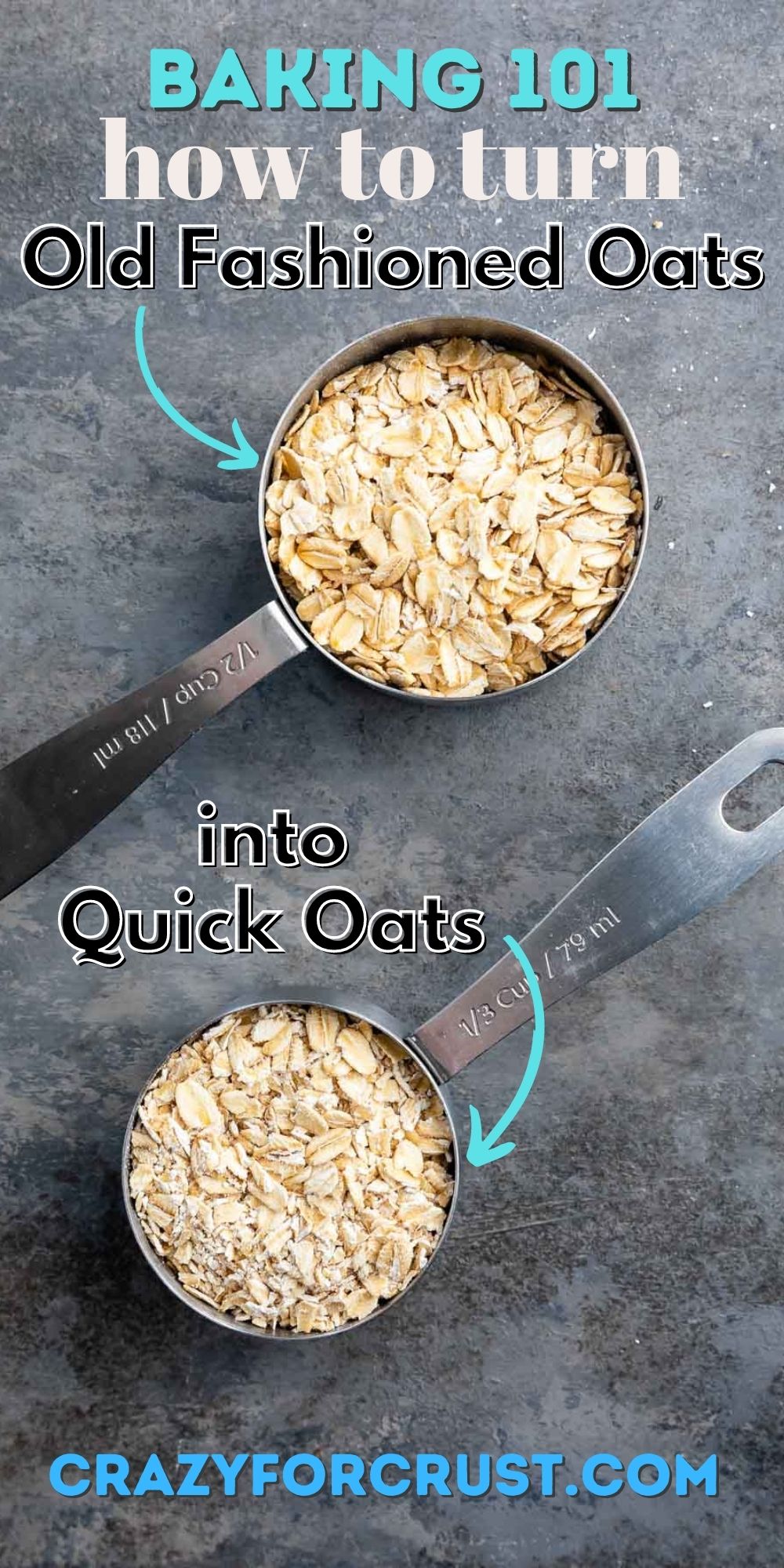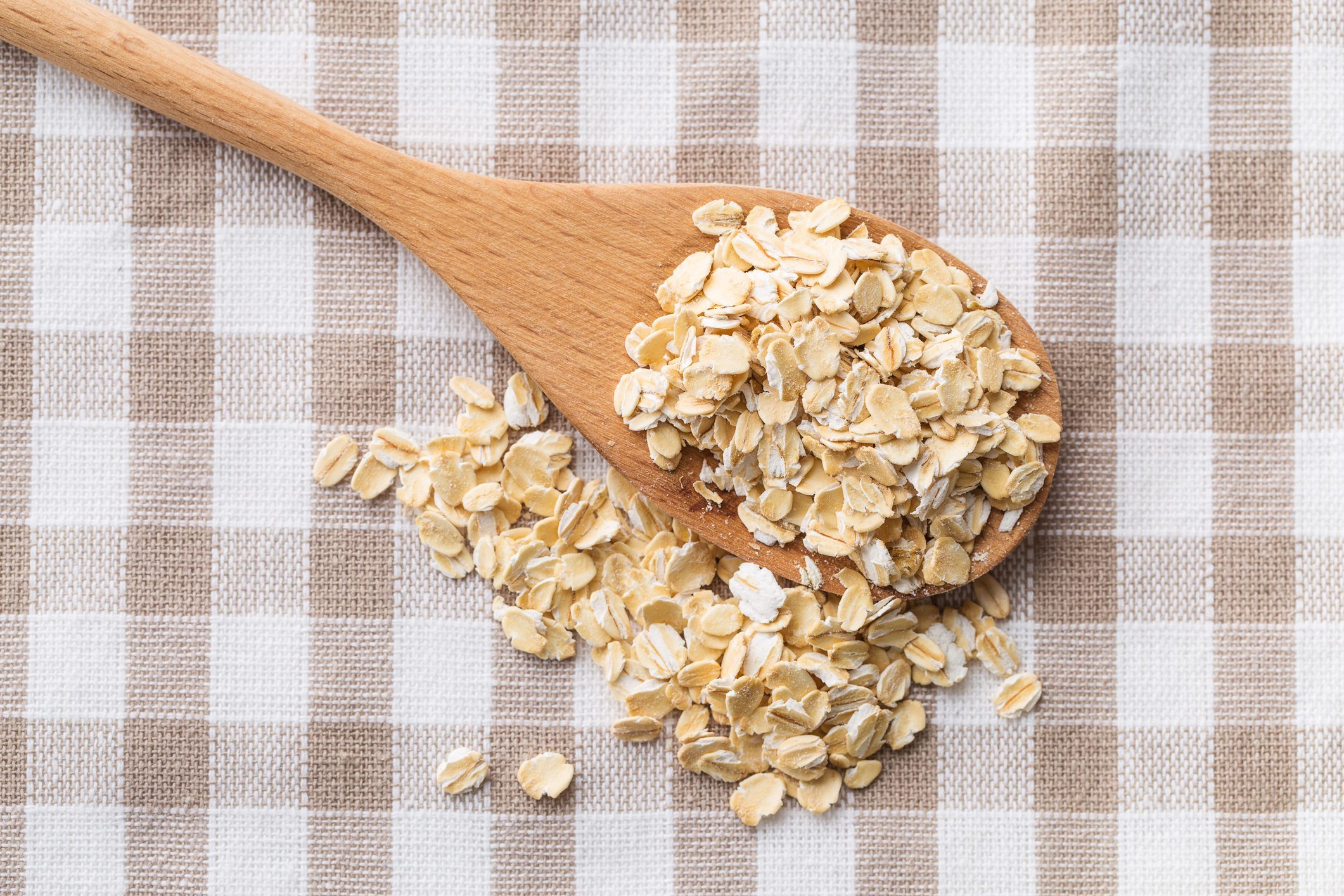Yes, you can substitute old-fashioned oats for quick oats. Adjust the cooking time as old-fashioned oats take longer to cook.
Oats are a versatile and nutritious ingredient used in various recipes. Old-fashioned oats, also known as rolled oats, are whole oats flattened into flakes. Quick oats, on the other hand, are rolled oats that are further processed to cook faster.
Both types of oats offer similar nutritional benefits, including fiber, vitamins, and minerals. Substituting old-fashioned oats for quick oats can slightly change the texture of your dish. This substitution works well in most recipes, but remember to adjust cooking times accordingly. Experimenting with both types of oats can add variety to your meals and help you discover new textures and flavors.
Old-fashioned Oats
Old-fashioned oats, also known as rolled oats, are a popular breakfast choice. They are less processed than quick oats and retain more nutrients. These oats are made by steaming and flattening oat groats with large rollers.
Characteristics
Old-fashioned oats have a chewy texture and nutty flavor. They take longer to cook compared to quick oats. Their larger size helps them hold their shape during cooking.
- Texture: Chewy
- Flavor: Nutty
- Cooking Time: Longer than quick oats
Common Uses
Old-fashioned oats are versatile and can be used in various recipes. They are ideal for making oatmeal, granola, and baking goods. You can also use them in savory dishes like meatloaf or as a breading for chicken.
| Recipe | Usage |
|---|---|
| Oatmeal | Primary ingredient |
| Granola | Main component |
| Baking | Cookies, muffins |
| Savory Dishes | Meatloaf, breading |

Quick Oats
Quick oats, also known as instant oats, are a breakfast staple for many. They are known for their convenience and quick cooking time. Let’s dive into their characteristics and common uses.
Characteristics
Quick oats are pre-cooked, dried, and then rolled. This process makes them thinner than old-fashioned oats. They cook faster, usually in about one to two minutes. Here are some key characteristics:
- Texture: Soft and mushy when cooked.
- Cooking Time: Typically one to two minutes.
- Preparation: Pre-cooked and rolled thin.
- Flavor: Mild and slightly nutty.
Common Uses
Quick oats are versatile and can be used in various recipes. Their fast cooking time makes them ideal for busy mornings. Here are some common uses:
- Breakfast Cereal: Perfect for a quick, hot breakfast.
- Baking: Used in cookies, muffins, and cakes.
- Thickening Agent: Adds texture to soups and stews.
- Overnight Oats: Prepped the night before for a quick meal.
Quick oats are not just for breakfast. They can be a healthy addition to many dishes.
Nutritional Differences
Understanding the nutritional differences between old-fashioned oats and quick oats is essential. These differences can impact your health and cooking outcomes. Let’s dive into the details.
Caloric Content
The caloric content between old-fashioned oats and quick oats is quite similar. Both types of oats provide around 150 calories per half-cup serving. This makes them a healthy breakfast choice.
Fiber And Protein
Fiber and protein are crucial for a balanced diet. Old-fashioned oats generally offer more fiber and protein compared to quick oats. Here is a quick comparison:
| Nutrient | Old-Fashioned Oats (per half-cup) | Quick Oats (per half-cup) |
|---|---|---|
| Fiber | 4 grams | 3 grams |
| Protein | 6 grams | 5 grams |
Here are some benefits of higher fiber and protein:
- Fiber helps digestion and keeps you full longer.
- Protein aids muscle repair and growth.
Both old-fashioned oats and quick oats have their own nutritional strengths. Choosing the right one depends on your dietary needs.
Cooking Time And Texture
When deciding between old-fashioned oats and quick oats, it’s important to consider cooking time and texture. These two aspects greatly affect the final outcome of your recipes. Let’s dive into the differences in preparation time and texture in recipes.
Preparation Time
Old-fashioned oats take longer to cook. They require about 10-15 minutes on the stovetop. Quick oats cook faster, often in just 1-2 minutes. This makes quick oats a convenient choice for busy mornings.
Here’s a quick comparison:
| Type of Oats | Cooking Time |
|---|---|
| Old-Fashioned Oats | 10-15 minutes |
| Quick Oats | 1-2 minutes |
Texture In Recipes
Old-fashioned oats have a chewier texture. They hold their shape well in recipes. Quick oats are softer and less chewy. They absorb liquid quickly and become mushy faster.
Here’s how each type affects different recipes:
- Oatmeal: Old-fashioned oats create a hearty bowl. Quick oats make a smoother, creamier oatmeal.
- Baking: Old-fashioned oats add a chewy texture to cookies and bars. Quick oats blend in more, giving a softer final product.
- Granola: Old-fashioned oats make for crunchy granola. Quick oats can become too soft and clumpy.
Choosing between old-fashioned oats and quick oats depends on your recipe. Both have their unique benefits in terms of cooking time and texture.
Substitution In Baking
Wondering if you can substitute old-fashioned oats for quick oats in your baking recipes? The answer is yes, but there are some things to consider. This section will explore how this substitution impacts your baked goods.
Impact On Taste
Old-fashioned oats and quick oats have different textures. This change can alter the taste of your baked goods. Old-fashioned oats bring a chewier, nuttier flavor. Quick oats give a softer, more uniform taste. If you enjoy a bit of crunch, old-fashioned oats are a good choice.
Impact On Consistency
The consistency of your baked goods changes with the type of oats used. Old-fashioned oats are thicker and heartier. They hold their shape better during baking. This can make your cookies or bars more textured. Quick oats blend into the mixture more easily. They create a smoother, more consistent texture.
To summarize the differences:
| Type of Oats | Texture | Consistency |
|---|---|---|
| Old-Fashioned Oats | Chewy, Nutty | Thicker, Heartier |
| Quick Oats | Softer, Uniform | Smoother, Consistent |
In recipes like cookies and bars, old-fashioned oats add a hearty texture. For cakes and muffins, quick oats may work better. Choose based on the texture you prefer.

Expert Tips For Substitution
Substituting old-fashioned oats for quick oats can be tricky. These tips help ensure your recipes turn out great. Follow these guidelines to make the best substitutions.
Adjusting Liquid Content
Old-fashioned oats and quick oats absorb liquids differently. Old-fashioned oats need more time and liquid. If your recipe calls for quick oats, use more liquid when using old-fashioned oats. Add an extra 1/4 cup of liquid for every cup of old-fashioned oats.
Here’s a simple table to illustrate:
| Type of Oats | Liquid Needed |
|---|---|
| Quick Oats | 1 cup |
| Old-Fashioned Oats | 1 1/4 cups |
Stir the mixture well. Let it sit for 5 minutes. This allows the oats to absorb the liquid.
Blending Old-fashioned Oats
Quick oats are finer than old-fashioned oats. To mimic the texture, use a blender. Blend the old-fashioned oats until they are finer. This will help them cook faster and more evenly.
Follow these steps:
- Measure the amount of old-fashioned oats needed.
- Place the oats in a blender or food processor.
- Blend until the oats reach a finer consistency.
Now you have quick oats! Use them in your recipes as you would regular quick oats. Blending ensures your dish has the right texture.
These tips help you substitute oats without issues. Enjoy your cooking!
Best Recipes For Substitutions
Wondering if you can use old-fashioned oats instead of quick oats? You can! This section will guide you through the best recipes for substituting old-fashioned oats. Follow these tips to make delicious treats like oatmeal cookies and granola bars.
Oatmeal Cookies
Oatmeal cookies are a classic treat. They are chewy and delicious. You can swap old-fashioned oats for quick oats. Just keep these tips in mind:
- Texture: Old-fashioned oats give a chewy texture.
- Flavor: They add a nutty flavor.
- Baking Time: May need a few extra minutes in the oven.
Here is a simple recipe:
Ingredients:
- 1 cup old-fashioned oats
- 1/2 cup flour
- 1/2 cup sugar
- 1/2 cup butter
- 1 egg
- 1 tsp vanilla
- 1/2 tsp baking soda
- 1/4 tsp salt
Instructions:
1. Preheat oven to 350°F.
2. Mix butter and sugar.
3. Add egg and vanilla.
4. Mix in flour, baking soda, and salt.
5. Stir in old-fashioned oats.
6. Drop dough on a baking sheet.
7. Bake for 10-12 minutes.
Granola Bars
Granola bars are a healthy and tasty snack. You can use old-fashioned oats instead of quick oats here too. Follow these tips:
- Texture: Old-fashioned oats provide a hearty texture.
- Flavor: They enhance the flavor.
- Binding: Make sure to press the mixture firmly.
Here’s a quick recipe:
Ingredients:
- 2 cups old-fashioned oats
- 1/2 cup honey
- 1/4 cup peanut butter
- 1/4 cup chopped nuts
- 1/4 cup dried fruit
Instructions:
1. Preheat oven to 300°F.
2. Mix honey and peanut butter.
3. Stir in old-fashioned oats, nuts, and dried fruit.
4. Press mixture into a baking dish.
5. Bake for 20-25 minutes.
6. Let cool and cut into bars.

Frequently Asked Questions
Can Old-fashioned Oats Replace Quick Oats?
Yes, old-fashioned oats can replace quick oats. They may need a bit more cooking time. Adjust the liquid if needed for consistency.
What’s The Difference Between Old-fashioned And Quick Oats?
Old-fashioned oats are rolled whole grains. Quick oats are cut into smaller pieces and rolled thinner. They cook faster than old-fashioned oats.
Do Old-fashioned Oats Change The Recipe’s Texture?
Yes, old-fashioned oats can change the texture. They are chewier and thicker compared to quick oats. Adjust cooking time accordingly.
Are Old-fashioned Oats Healthier Than Quick Oats?
Old-fashioned oats and quick oats have similar nutritional values. The primary difference is in texture and cooking time, not health benefits.
Conclusion
Substituting old-fashioned oats for quick oats is simple and versatile. Both types offer great nutritional benefits. Always adjust your cooking time accordingly. Experiment to find the texture and flavor you prefer. Enjoy the flexibility and health advantages of both oats in your recipes.
Happy cooking and baking!